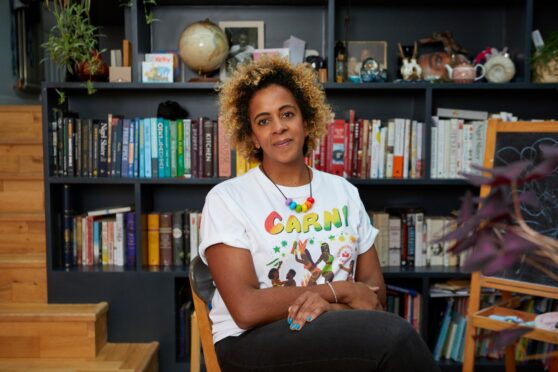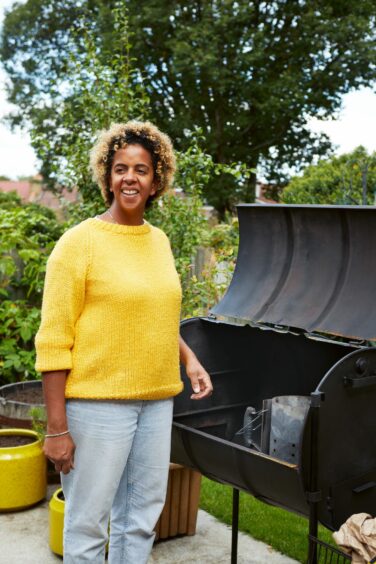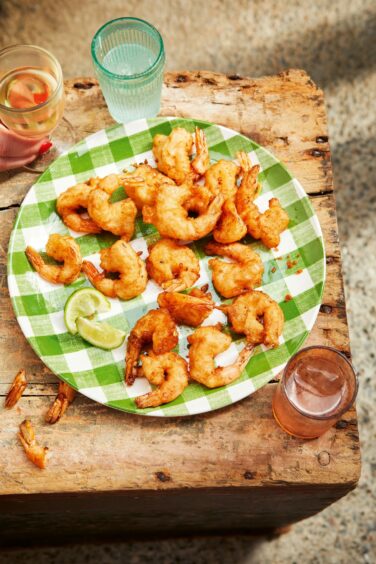
Ackee and saltfish are undeniably linked to Jamaica, but how did that come to be? That’s one of the many questions that constantly swirl around Melissa Thompson’s head – a food writer and cookbook author who says she’s “always been interested in the stories behind food”.
Food from Jamaica – where her father is from – particularly piques her interest.
“Ackee and saltfish just rolls off the tongue, it’s such a classic dish. But they’re not necessarily a natural pairing,” she says. “Who thought to put them on a plate together? It works so well, but obviously, everything has a beginning.”
Thompson, 41, was surprised to learn ackee isn’t originally from Jamaica at all, despite being synonymous with the country’s cuisine (it’s actually native to West Africa, and came to the Caribbean through the slave trade).
“I was looking for a book that satisfied my curiosity about the history of Jamaican food,” she says, but “it didn’t really exist”. This is why she decided to write Motherland, a debut cookbook with a historical narrative, with Jamaican recipes interwoven with powerful essays about the history of the country, particularly the impact of slavery and colonisation.
She first learned about Jamaican food from her father, who she describes as “a magpie when it comes to flavours”. He was in the navy and picked up lots of different cuisines from his travels, but it’s his Jamaican cooking that seems to have stuck with Thompson the most.
“He’s a very poor delegator when it comes to cooking, so I just observed,” she remembers fondly. “Sometimes, I got to help make the dumplings and all that stuff, but really I’d watch him – maybe I’d flake the saltfish.
It was when Thompson moved out of home and went to uni she started cooking the dishes of her childhood. “When the people who cook the food you’ve grown up with are no longer living with you, you have to cook it yourself, to satisfy the craving,” she says.
But, because Thompson wasn’t allowed to do much in the kitchen growing up, she learned these dishes more by osmosis – “by watching and taking it in”.
And she got to experience Jamaican food first-hand when visiting the island. “Food is everywhere in Jamaica, whether it’s getting cooked, or it’s just growing,” she says. “To me, ackee had always come in a tin, and it’s always expensive – like £5 for a tin – so it’s quite a precious thing. I would never be allowed to deal with the ackee, because I’d stir it too enthusiastically and break it all up.
“But the first time we went to Jamaica, it was in season, and it blew my mind to hold an ackee pod, and see the ackee fruit – it’s beautiful. I couldn’t believe the ground was littered with them.
“Food in Jamaica makes you realise how brilliantly people in the UK do it – how brilliantly my dad has always done it.”
Jamaican immigrants to the UK had to learn how to recreate their cuisine with limited access to the ingredients of their homeland, and this surprised Thompson when she visited the island.
“Suddenly, things that are so precious and scarce in the UK are in beautiful abundance in Jamaica. My dad would tell me these stories about growing up, climbing trees and eating mangoes to his heart’s content. Mango has always been one of my most favourite fruits – we’d go to London and buy four, because they were quite expensive. And all of a sudden there was more mango than you can possibly eat (in Jamaica).
“You’re seeing the cuisine at its source, at the country of origin. In the environment where these dishes were created, you get to understand it a bit better.”
So, what’s the one thing people tend to get wrong about Jamaican food? Thompson suggests there’s a massive misunderstanding of what Jamaican food is about. She says: “People think it’s quite one-note, they think it’s more about jerk – jerk is amazing, but there is so much more to Jamaican food than jerk.”
And Thompson really wants people to stop messing around with classic recipes, saying: “Sometimes, you’ll see recipes from established chefs – who should know better – it’s like jerk with different chillies, whether it’s jalapenos or random things. I don’t know whether it’s trying to differentiate, so it’s not copying someone else – but jerk has to be Scotch bonnet.”
Ginger beer prawns
“My idea for this dish came from Japanese tempura – the sweet prawns encased in a light, crispy batter is a dream combination,” says Melissa Thompson.
“While tempura calls for soda water, ginger beer is a great alternative. It brings both delicate flavour and sweetness, while the bubbles make the batter as light as air.”
Serves four as a starter
You’ll need:
- 16-24 shell-on raw king prawns
- 1 garlic clove, crushed
- 2.5cm piece of ginger, finely grated
- vegetable oil, for deep-frying
- 50g cornflour
- 50g plain flour
- 120ml ice-cold ginger beer (not diet)
- Sea salt and freshly ground black pepper
- Lime wedges, to serve
Method:
Remove the heads and shells of the prawns, leaving on the tail sections. (You can also use shelled prawns, as long as they are raw.) Mix in a bowl with the garlic, ginger and some pepper and leave for 30 minutes.
Pour oil into a medium-sized saucepan, following all the usual precautions for deep-frying and heat to180C.
Mix the flours in a bowl and pour in the ginger beer. Stir loosely, as vigorous mixing will get rid of the bubbles you want to keep; don’t worry if there are some lumps.
Just before cooking, season the prawns with a good pinch of salt. Holding a prawn by the tail, dip into the batter, then drop into the hot oil. Cook until the batter puffs up, about two minutes. Repeat to cook all the prawns, frying them in small batches so as not to overcrowd the pan.
Drain on a wire rack placed over kitchen paper, not directly on kitchen paper or the batter will go soggy, and serve with a squeeze of lime.
Motherland, Bloomsbury Publishing, £26, available now. Photography by Patricia Niven

Enjoy the convenience of having The Sunday Post delivered as a digital ePaper straight to your smartphone, tablet or computer.
Subscribe for only £5.49 a month and enjoy all the benefits of the printed paper as a digital replica.
Subscribe



